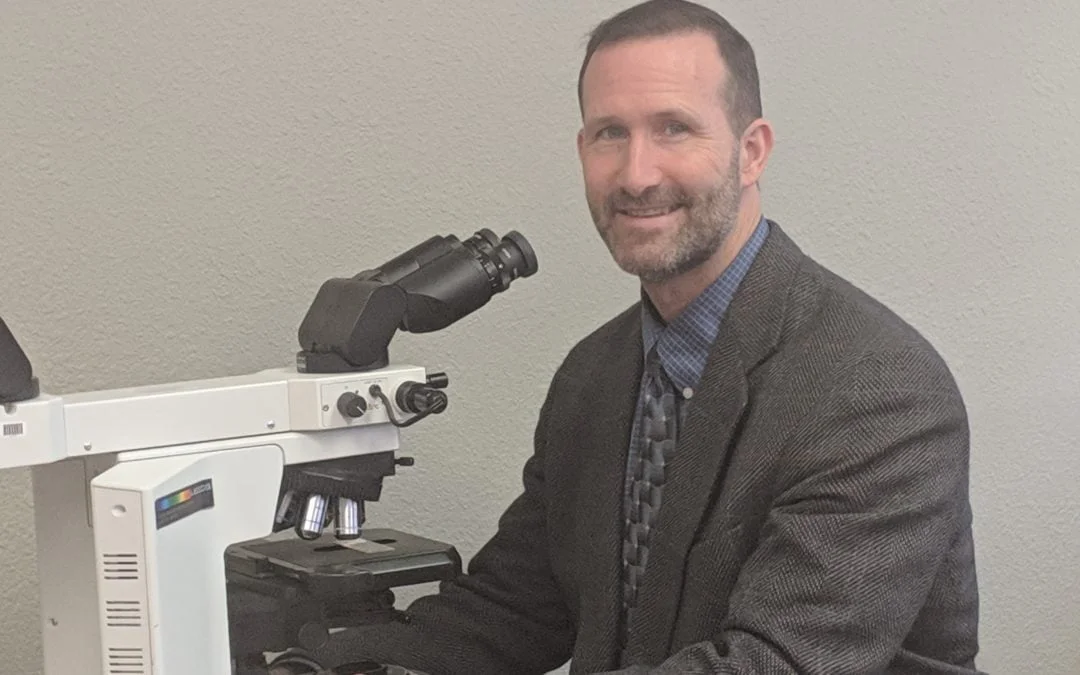Darren Whittemore didn’t always want to be a dermatopathologist. As a child, he wanted to be an astronaut.
His education took flight at San Diego State University, where he earned a BS in aerospace, aeronautical, and astronautical/space engineering. But as his interest in medicine grew, his role serving in the US Air Force took him to Texas to complete his education.
Darren completed his anatomic and clinical pathology residency at the combined US Air Force Wilford Hall Medical Center/Brooke Army Medical Center program. He then completed his fellowship in dermatopathology at the University of Texas Health Science Center in Houston under the nationally renowned Dr. Ron Rapini. Today, Darren is US board-certified in anatomic and clinical pathology and dermatopathology.
We sat down with Darren Whittemore to learn more about his pathway to dermatopathology and what he brings to the PathologyWatch team. Here are some of the highlights of that interview.
Was there a defining moment in your professional career when you knew pathology was the right choice?
While some people experience a single defining moment that changes their course, I experienced more of a series of moments that lead me to dermatopathology. It was while I was doing my third or fourth year of medical school end-of-rotation lectures that I realized I was fascinated by the pathogenesis of disease. Through those experiences, I knew I would be happier and feel more fulfilled by understanding the disease processes and educating peers in these areas.
While part of the aerospace engineering program as an undergraduate, I came to appreciate the completion of a project, which doesn’t always happen in the real engineering market. I was drawn to watching a project come full-circle. That’s what helped me decide to move more toward a career in medicine. Those plans were confirmed when I got an Air Force scholarship for pathology at one of the biggest AF academic centers at the time.
What is the most rewarding aspect of working in pathology?
Since separating from the Air Force, I have really enjoyed the private practice and business side of dermatopathology. This environment is surrounded by exploring new ways of helping patients and finding better ways to deliver patient care. There is so much to learn and do in this field. It’s an exciting environment in which to work.
I served in the US Air Force as a general pathologist and dermatopathologist for 12 years, separating as a lieutenant colonel. Since then, I have enjoyed establishing independent roots and building a reputation in various areas of expertise. The innovation emerging from this field has a global impact, and it’s rewarding to see international opportunities and assess the needs of the dermatopathology world.
What made you want to work with PathologyWatch?
I’m drawn to the innovation of digital pathology enabling dermatopathologists at multiple locations to be linked together nationally and internationally by viewing shared images at the same time. I love how that technology brings us together as if we are all in the same room.
This is also an exciting platform for teaching. There are plenty of volume-scaled opportunities for dermatopathologists and students since we have access to experts who can direct more learning by sharing their experiences and expertise. Personally, I believe having access to these leaders heightens the capabilities of the field.
Finally, the services provided by PathologyWatch means clinicians never have to work alone with this technology. We are connecting smaller clinics in all kinds of rural areas with remote work capabilities. For example, it’s often the case that a client is one of only a few clinicians in the area, yet that client has access to people all over the world with an enormous amount of experience.
You have over a decade of dermatopathology experience. What is it about your experience and/or background that helps you bring something unique to PathologyWatch?
I think my leadership roles, both in the academic and business sectors, have helped prepare me for this opportunity. But I think my directorship experiences from serving in the military at multiple laboratory sites will also be a big contribution. It’s given me confidence in my abilities.
I hope to bring my subspecialty experience and abilities in diagnosing alopecia cases to the PathologyWatch team so that they can be an even stronger comprehensive group of highly-trained and skilled dermatopathologists.
After a long day, what are your favorite things to do?
My wife and I have nine children, so I enjoy primarily wonderful family activities. We now live in a beautiful area in Northern Idaho, so there are plenty of outdoor activities to do on the weekends. I also enjoy fitness and strength training.
Music is a big part of my family as well. Eight of my children are training in Suzuki violin. I’ve played the clarinet and saxophone since high school, playing in various bands. Even now, you’ll still catch me playing my soprano saxophone to unwind.

